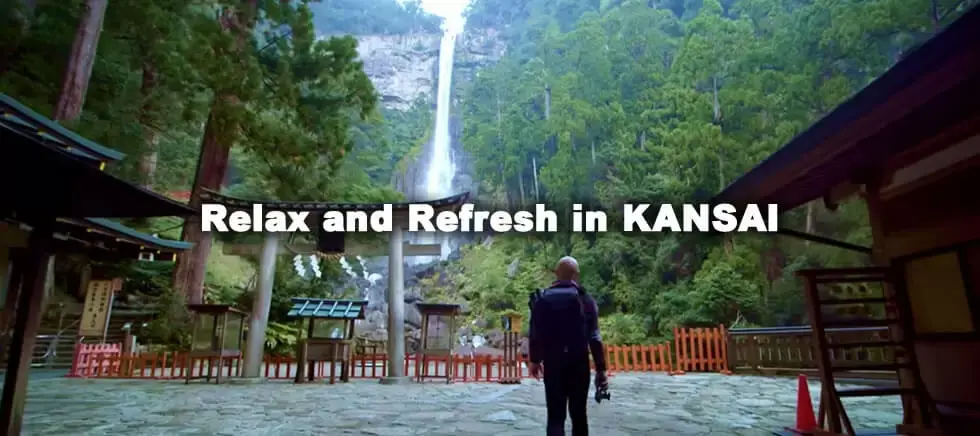
Relax and Refresh in KANSAI
Last update
あなたは、どれくらい日本人になりたいですか?
この魅力的な国の習慣と文化に浸る準備はできていますか?
日本人は、美味しく見た目にも美しい料理をつくります。また、素晴らしい「おもてなし」もできます。ものづくりや小型化の技術も持っています。
そして日本人は、リラクゼーションも極めています。
日本の温泉、特に海、川、湖沿いの温泉でのリラックスすることは最高です。
想像してみてください。自然に囲まれた天然温泉に、ありのままの姿(=自然な姿=裸で)でいるあなた自身を。日本では、他の人と一緒にお風呂に入ることは普通(=自然)のことです。あなたは、日本で知らない人と一緒に温泉を楽しむことになるかもしれません。
だから、どれだけ日本人になれるか(=日本のライフスタイルに慣れるか、溶け込むことができるか)を是非、考えてみてください。他人と一緒に風呂へ入ることに抵抗があるかもしれません。でも、よく考えてみてください。ここは日本です。彼らはあなたのことを知らないし、あなたも彼らのことを知りません。だから、緊張も、自分の服も脱ぎ捨てて、関西の温泉を楽しみ、日本ならではのリラクゼーションを楽しみ、リラックスしてください。
Relax and Refresh in Kansai’s Seaside Hot Springs
Shirahama Onsen, Hot Springs of the Emperors
With over 1,350 years of history,Shirahama Onsen in southern Wakayama is one of the oldest and most famous of the nation’s onsen, said to have been enjoyed by the Emperors, Imperial courtiers, samurai elite and aristocracy from ancient times. It’s also one of the most mysterious of natural geothermal hot springs, as the steaming water bubbles up along the coastline despite there not being any volcanic activity in the vicinity.
In particular, the Saki-no-Yu is believed to be the oldest of these hot springs, located right on the coast of the Pacific Ocean, with the waves crashing onto the rocks beside you as you soak in the spring. It’s an extraordinary experience, sitting in a large, open air rock pool of steaming hot water, with the spray of the crashing waves raining down into the pool. The view is superb, the water divine. Little wonder the Imperial family would make the trip to Shirahama for some rest and relaxation.
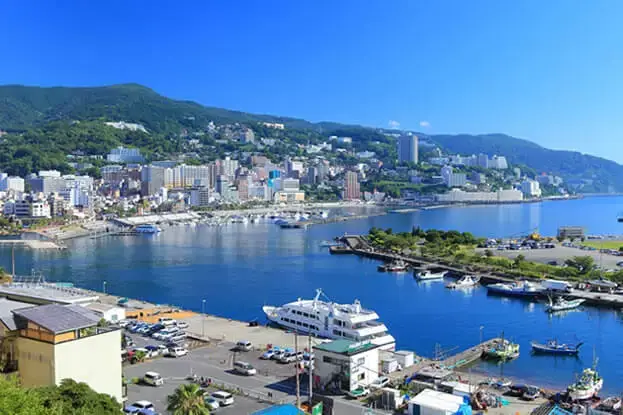
Shirahama Onsen
Rotenburo, The Ultimate in Outdoor Relaxation
Other captivating outdoor baths, known as rotenburo, include theKatsuura Onsen, also in Wakayama Prefecture, and situated among the World Heritage listed sacred sites and theKumano Kodo pilgrimage routes of the Kii mountain ranges. Near Katsuura are the famedNachi Falls, which at 133m, is Japan’s biggest single drop waterfall. Enjoy walking stretches of the ancient stone-laidKumano Kodo, absorb the culture and history of the local shrines and marvel at the magnificence of theNachi Waterfalls before retiring to your stay and another relaxing soak in the enticing waters of the hot springs.
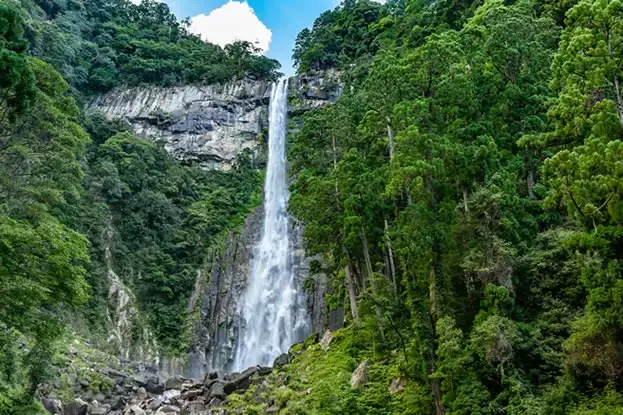
Nachi Waterfalls
Pride of Fukui
The Awara Onsen in Fukui Prefecture dates back to 1883, when a farmer digging a well discovered a natural source of steaming hot mineral water, sparking the beginning of a lucrative, thriving onsen business that has kept the town on the relaxation map for almost 130 years.
While many of the quality ryokan, traditional styled inns and various hotels offer the Japan experience, rooms with Tatami mats, sliding fusuma screens and futon bedding, there are just as many comfortable Japanese modern styles with western amenities available too.Awara Onsen’s hotels pride themselves in their unique hospitality, offering various entertainments, and a variety of dining choices, ranging from traditional seafood to western and even buffet menus.
Nearby to these quality resorts are the volcanically formedTojinbo Cliffs, a stunning 1km stretch of uniquely squarish block-shaped rugged rocky coastline well worth going to see!
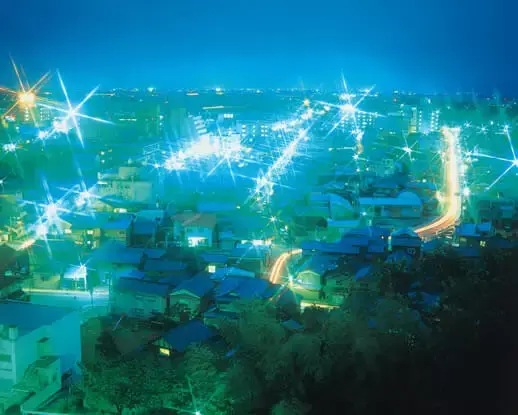
Awara Onsen
Facing the Sea of Japan, the Echizen region in Fukui Prefecture is another idyllic setting for hot spring enjoyment. Position yourself correctly in the outdoor baths and the steaming hot waters seem to blend in with the spreading Sea of Japan. Spend a late afternoon soaking in the waters and then bathe in the golden sunlight of the spectacular sunsets. Enjoy the stars at night, or blue sky and birdsong in the day from the outdoor hot springs of Fukui’s resorts.
Cleansing the Body & Soul
Cleanse your soul in the ancient and sacred Great Shrine of Ise, then cleanse your body in Mie Prefecture’s Toba and Shima areas’ hot springs. Enjoy the heartwarming hospitality of the areas many hotels and ryokan serving the freshest of local seafoods, and the body warming thermal springs. Wherever you choose to stay, you can be assured of views of the pristine, island dotted bays, and unspoiled natural scenery of Mie Prefecture.
Tottori Prefecture is famous for its Kaike Onsen. Sodium and calcium chloride springs with temperatures of between 63 to 83 degrees and said to be effective against nerve pain, rheumatism, skin conditions and provides relief for the body and enhance relaxation of the mind.
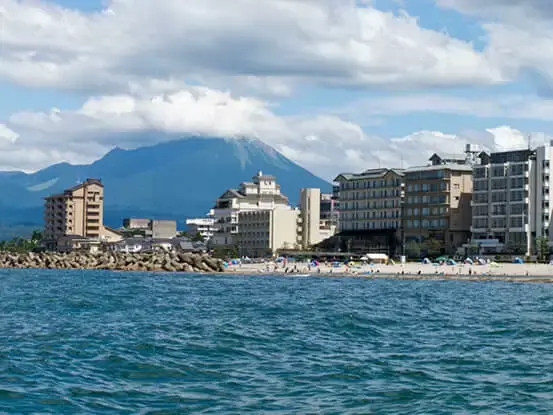
©Tottori Pref.
Kaike Onsen
It takes two to Tango, and the Tango Peninsula north of Kyoto is home to the Yuhigaura Onsen in Kyotango City. The Yuhi part of the name Yuhigaura refers to sunsets, and this little-known resort is the ideal place to watch the sunset over the Sea of Japan from the natural thermal springs or comfort of the ryokan. There’s very little about this quaint fishing village on the internet, and despite it being part of Kyoto, it is totally secluded and thankfully bereft of the usual hoards of tourists. This must be one of the Kansai regions greatest relaxation secrets!
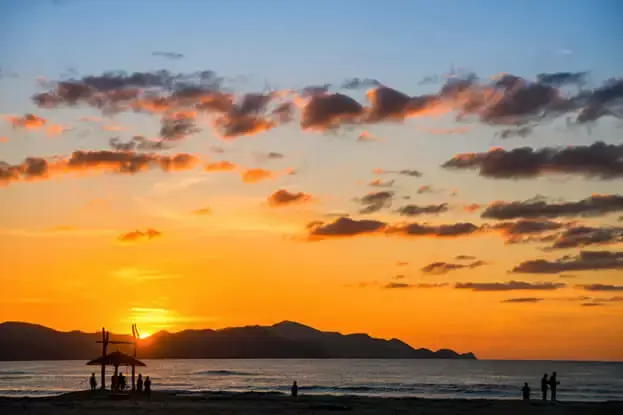
Yuhigaura Onsen
Kansai’s Riverside Onsen
While the Kansai region’s seaside vistas can be exhilarating, the scenes along the rivers offer something different yet again. The cuisine served in the many quality ryokan and hotels differs too, offering more variety than just seafood, with local dishes, fresh from the surrounding rivers and mountains rounding out the menu.
Being close to Osaka, romantic Kobe’s Arima Onsen is another popular getaway for the locals. Located on the inland side of Kobe’s Mt Rokko, Arima Onsen offers two distinct hot spring waters. Kinsen, or “gold spring” waters are high in iron content, and as such are a yellow- brown in color, but said to be good for skin ailments and muscle pain and circulation, while the clear Ginsen "silver springs" containing radium and carbonate are believed to be beneficial for various muscle and joint ailments, menopause and asthma.
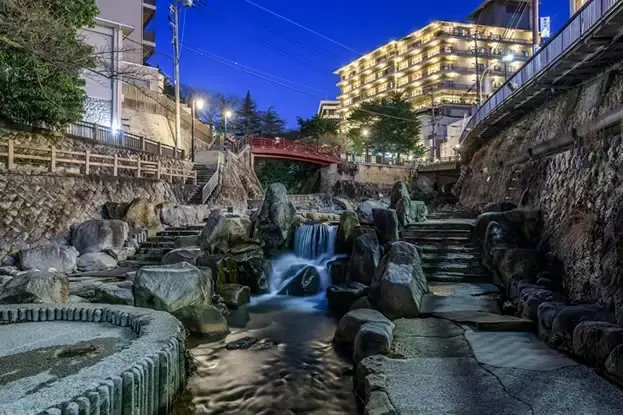
Arima Onsen
Located in the northern districts of Hyogo Prefecture, Kinosaki Onsen boasts 1,300 years of history, many traditional inns, and a range of distinct hot springs and activities to enjoy. Most visitors prefer to do nothing but enjoy the peace and quiet of the surrounding town. In fact, many historic accomplished notables came to Kinosaki while writing their literary masterpieces, or to recover from burnout following the arduous task.
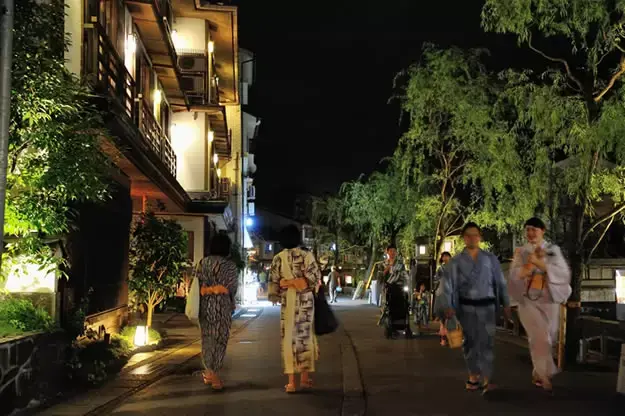
Kinosaki Onsen
The White Wolf of Misasa and Secret Spring Locations
Listed as a Constituent Cultural Asset, Japan Heritage registered Misasa Onsen in Tottori Prefecture is one of those Must Experience locations. The story goes that about 850 years ago, a retainer of the mighty warrior Minamoto no Yoshitomo was making a pilgrimage to sacredMt. Mitoku when he came across an old white wolf. Believing the white wolf to be a sign from the heavens, he let the wolf be. That night, in his dreams, the gods came to the samurai and in gratitude for sparing the life of the white wolf, revealed to him the site of an old camphor tree from which therapeutic hot waters flowed. Today a statue of the scene marks the spot of what is claimed to be one of the world’s finest radon springs, said to heal the six senses; hearing, sight, taste, touch, smell and importantly, spirit.
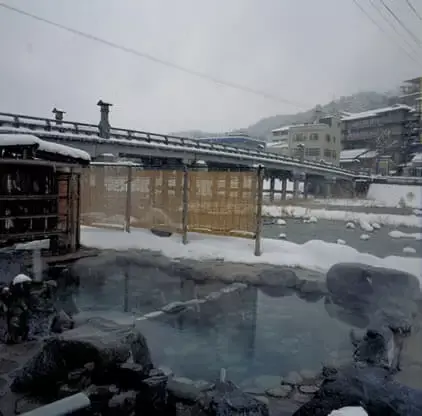
©鳥取県
Misasa Onsen
The crystal-clear rivers and streams of Tokushima Prefecture’sIya region wind their way through steep ancient gorges, surrounded by majestic mountains and dense forest vegetation. It is a mostly unknown, secretive and secluded area. The secrets are the riverside hot springs, and the whereabouts of the lost sword of Emperor Antoku, said to have been hidden in these remote mountains over 835 years ago. Take a boat ride along the river and through the gorges, or dare to cross the narrowKazurabashi vine bridge, made by the defeated Heike warriors fleeing the 12th century civil wars, and then soak at your pleasure in leisure at the Oboke Iya Valley Hot Spring Village. The stunning scenery, tranquility, stories and its charms will remain your little secret.
Kansai’s Lakeside Hot Springs
Lake Biwa is Japan’s largest freshwater, and one of the world’s oldest lakes. Ogoto Onsen, on the south western shores of Lake Biwa, is just 20 minutes by train from Kyoto Station, making it the ideal place to wind down after touring bustling Kyoto. Believed to have been discovered by the monk Saicho, who also founded the nearby Enryaku-ji Temple on holy Mt. Hiei, the highly alkaline natural spring waters are claimed to therapeutic in the relief of neuralgia, muscular and joint pain, beautifying the skin and general fatigue. The many onsen resorts provide guest rooms with private open air baths and rooftop open air baths with views ofLake Biwa. Japanese cuisine most agreeable with international visitors including the famed Omi Wagyu Beef, Biwa trout and ayu sweetfish, winter duck and the prized Omi rice is on offer, leaving you stress free from food worries.
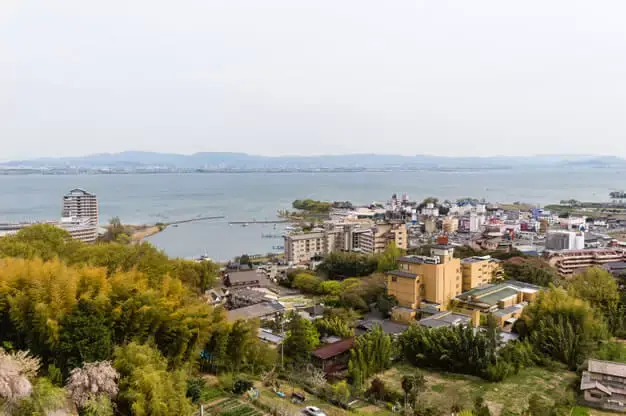
Ogoto Onsen
Another Kansai region lake is Lake Togo in Yurihama, Tottori Prefecture. Yurihama takes its name from its surrounding features, Yu means hot water, in particular the area’s famed hot springs, Ri comes from the regions famed Nashi pears, and Hama comes from the pristine white sandy beaches along the Sea of Japan coast. Yurihama is famous for Lake Togo, a 2km long, 12km circumference, 2-7m deep lake. The shores of Lake Togo make for a fine walking trek before resting and relaxing in a lakeside onsen resort. Early morning open air bathing is popular and recommended for watching the spectacular sunrises over Lake Togo. What a way to while away the hours!
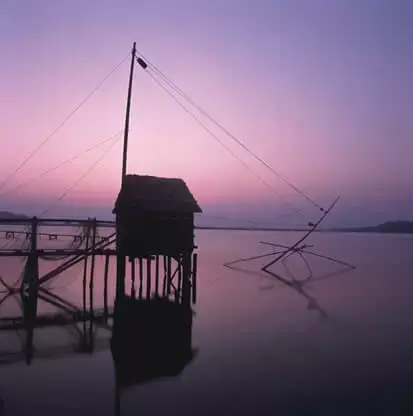
Lake Togo
Peace of Mind, Peace of Spirit
The Kansai region is proud of its long history and deep culture. Long considered the cultural heart of Japan, it is home to Fukui Prefecture’s Eihei-ji Temple, the main headquarters of the Soto sect of Buddhism, and a leading Zen temple, designated two stars in the Michelin Green Guide Japan. You too can experience true Zazen and Buddhist training in the tranquil temple, surrounded by natural forest. Upon arrival, you will notice something different about the atmosphere, the silence and the enhanced spirituality that can be physically felt. This in itself is an incredible, life changing, unique experience that can only be truly realized in a temple as spiritually important as the Eihei-ji.
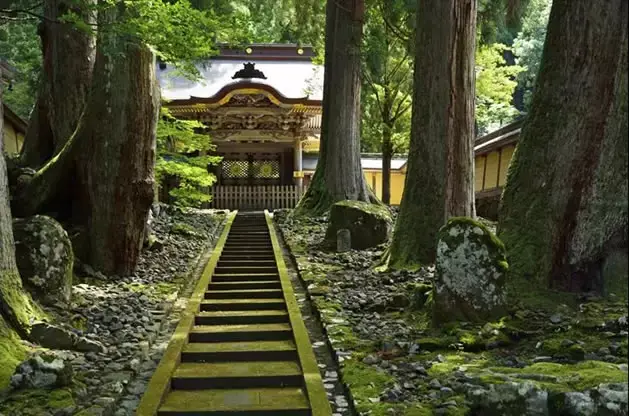
Eihei-ji
The only other place that could possibly be any more spiritually moving, is the isolated and most holy Mt. Koya in Wakayama Prefecture, a World Heritage listed Buddhist sanctuary founded by the saint, Kobo Daishi over 1,200 years ago and devoted to Zen, Buddhist studies and inner contemplation. Around 50 of the over 100 temples onMt Koya offer Shukubo experiences, overnight temple accommodation, including Shojin Ryori, the simple vegetarian temple cuisine, and an opportunity to take part in prayers and meditation training. This is an authentic, extraordinary experience.
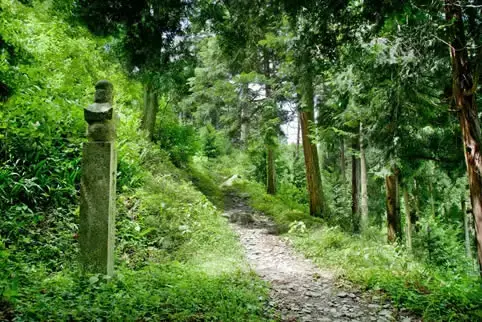
©Wakayama Tourism Federation
Mt. Koya
On the topic of extraordinary experiences, walking through Mt. Koya’s often mist engulfed Okunoin cemetery, the unearthly atmosphere of the moss-covered silent samurai graveyards and 300,000 tombstones of the pious surrounded by stone lanterns and towering cedar trees, making your way to the mausoleum of the saint, Kobo Daishi, rumored not to be dead, but in eternal meditation, praying for the peace of all humanity, is another of those moments you will never forget.
A stay on Mt. Koya will stay in your heart and mind for eternity. This will leave you feeling completely relaxed, refreshed, and ready to see the world in a different light.
Walk, Cruise, Meditate, Rest & Relax
There is so much relaxing to do in Kansai! Besides the attractive hot springs, you may want to walk the sacred Kumano Kodo, the ancient stone-lined World Heritage pilgrimage route, used by the Imperial family, aristocrats, samurai and pilgrims linking Kyoto’s Mt. Kurama via Wakayama Prefecture to the sacred sites in Mie Prefecture. Engage in a round of sand yoga in the desert dunes of Tottori Prefecture, try forest therapy in serene Nara Prefecture’s picturesque and peacefulYoshino-cho, or relaxing thalassotherapy and aromatherapy in soothing Mie Prefecture. While there is so much to see and do in Kansai, there is also a lot of nothing to do too!
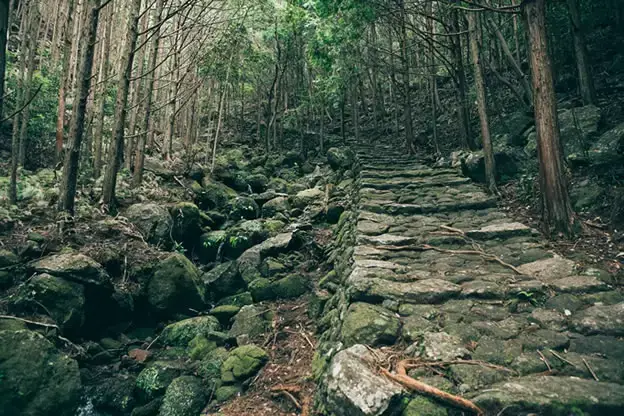
Kumano Kodo
Kansai Cruising
Cruising conjures up the ultimate image of leisure recreation, and the Kansai region has more than its fair share of relaxing and enjoyable cruises available on the various seas, rivers and lakes. Cruise Osaka Bay or the rivers and canals of historical Osaka. The Seto Inland Sea is famed for its’ Naruto tidal whirlpools and calm sailing conditions. Lake Biwa offers freshwater cruises to the islands and scenic spots. The various rivers criss-crossing Kansai provide yet another fine cruising encounter. Make cruising the high waters the highlight of your Kansai visit.
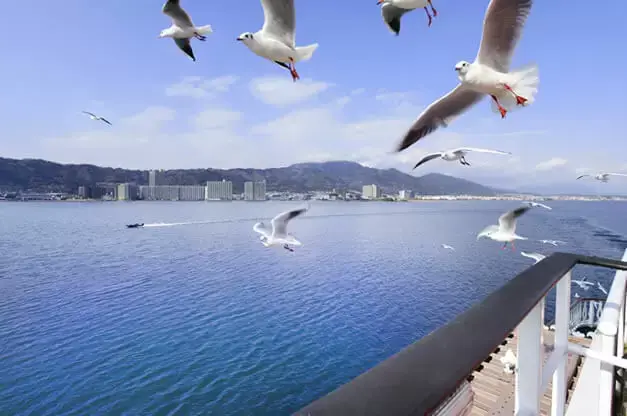
Lake Biwa
To become truly Japanese when visiting any of the Kansai hot spring resorts, you will also need to know an important and often used word. That word is “Aaaah!” You will use it when discovering another fascinating aspect of Japanese culture, you will use it when taking in the breathtaking Kansai scenery, and you will definitely use it while slipping into the hot spring waters of Kansai’s onsen. The wonderful thing is that “Aaaah,” is an international word meaning, “This is GOOD!”, and translates perfectly in any language.
Immerse yourself in the customs, the culture and the hot springs of Japan’s Kansai region.
Writer: Chris Glenn

Chris Glenn is an Australian born bilingual radio DJ, TV presenter, narrator, MC, copywriter, author, columnist, and Japanese historian, specializing in samurai castles, battles, armor and weapons. Based in Nagoya since 1993.
He is an inbound tourism advisor for national and local governments and is often called upon as a lecturer and speaker on Japanese history and culture, media and inbound tourism topics. Having written many websites articles, pamphlets, signs and explanations for local governments, DMOs, museums, tourist sites and businesses, he has a reputation for English writing that matches the needs and senses of foreigners visiting Japan.
His books include the English language “The Battle of Sekigahara” (Booklocker) the Japanese language “Australian Researcher’s Castles of Japan” (Takarajima) and Samurai Castle Bilingual Guide (Shogakukan). Chris is dedicated to promoting and preserving Japans’ long history, deep culture, traditions, arts and crafts.
Check also...
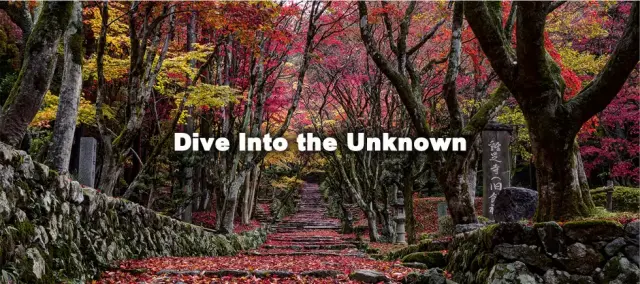
Historical Kansai, Cultural Kansai, Japan’s Treasure House
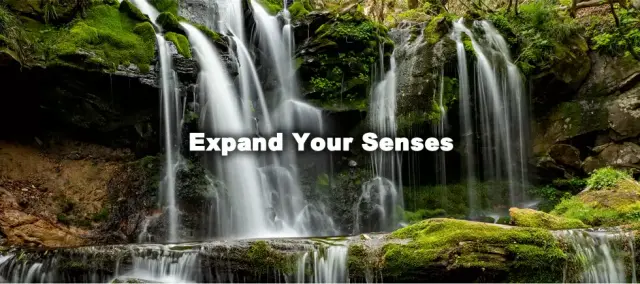
Natural Kansai, Adventures Beyond The Big Cities

Japan’s Kitchen, Must-Try Kansai Cuisine
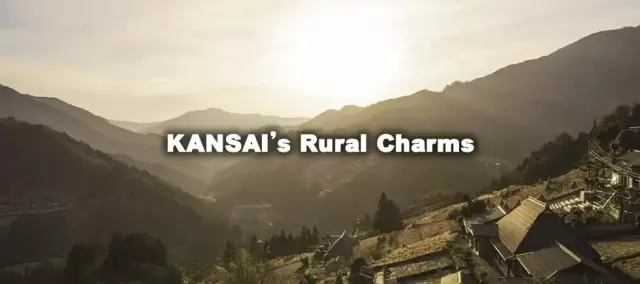
KANSAI’s Rural Charms
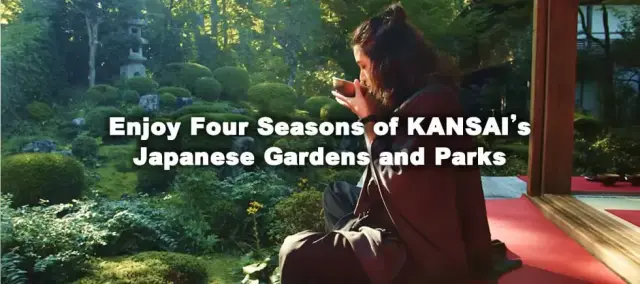
Enjoy Four Seasons of KANSAI’s Japanese Gardens and Parks
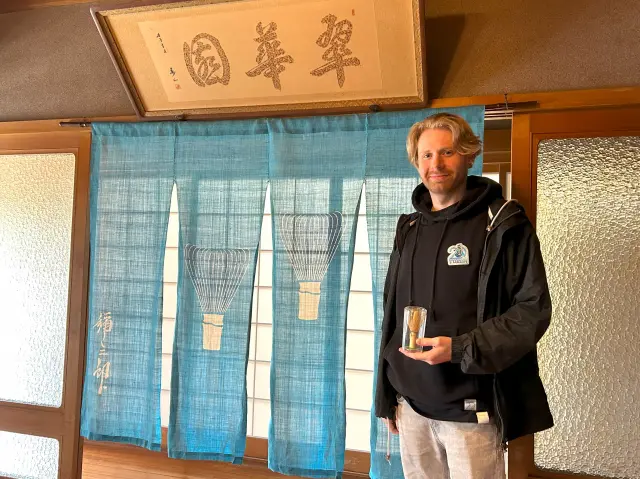
Timeless Culture: A Journey to See, Taste, and Experience the Depth of Traditional Industries in Osaka and Nara
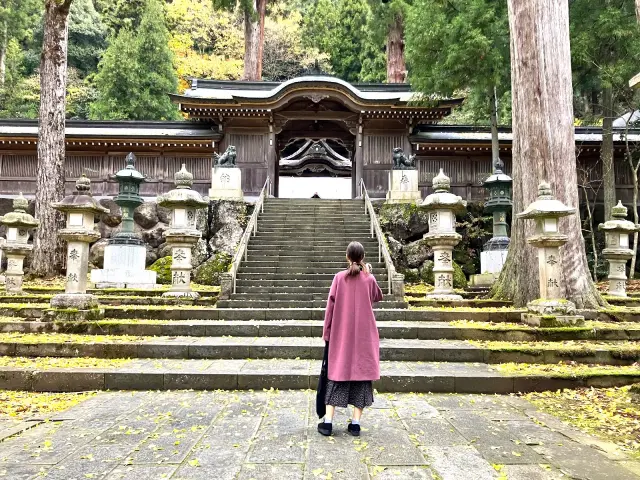
Timeless Traditions: A Journey Through Kyoto and Echizen’s Artisanal Craft Industry

